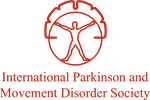 VOLUME 28, ISSUE 1 • March, 2024. Full issue »
VOLUME 28, ISSUE 1 • March, 2024. Full issue »

Other articles on Classification and Staging in Parkinson’s diseaseNavigating Controversies: Exploring Advancement of Parkinson's Disease Classification and Staging |
A Biological Definition and Staging of Neuronal Synuclein Disease: Toward an Integrated Staging System
On behalf of the NSD-ISS writing group, it is my pleasure to present a biological definition and staging of Neuronal Synuclein Disease (T Simuni, LM Chahine, K Poston, et al. “A biological definition of neuronal α-synuclein disease: towards an integrated staging system for research.” Lancet Neurol 2024; 23: 178–90.).
The Vision of Primary Prevention
There is a future when screening for neurodegenerative diseases, such as Parkinson’s disease (PD) and dementia with Lewy bodies (DLB), will be part of a primary disease prevention plan for healthy aging adults. A biological definition and staging of these neurodegenerative diseases are critical steps toward the therapeutic development that needs to happen for this vision to become a reality, so that neurodegenerative diseases of aging will be screened before the onset of symptoms (illness) and as such be effectively prevented in a disease targeted and personalized way. This is the goal of the Neuronal Synuclein Disease Integrated Staging System (NSD-ISS).
The Biology is the Disease
A core principle underlying the NSD-ISS is that the biology is the disease. This principle sounds simple, but when it is a core principle there are consequences and implications that must adhere to this principle, and some of those implications require us to change the way we look at things.
For instance, most physicians spend their clinical time treating the motor and non-motor sequelae of disease. Clinical trials and observational studies have pushed research to start at the very first appearance of symptoms. More recently there has been a push toward what is being called a prodrome to PD or DLB, with symptoms like RBD or hyposmia. But if we ever want to realize that vision of disease targeted primary prevention we have to start when the biology is present but there are absolutely no symptoms. A biological definition means that the detection of the biology, without any clinical symptoms, is the disease. And what is meant by an integrated staging system is that the framework starts at the time the biology is detected, before any symptoms, and continues through the first manifestations of the underlying disease, through progression to what we now use as the clinical diagnoses, and including the progression toward functional impairment.
Neuronal Synuclein Disease: a unifying term
The constellation of parkinsonian motor, cognitive, neuropsychiatric, sleep, autonomic and other non-motor symptoms all have extensively overlapping pathology at autopsy, hallmarked by presence of predominantly neuronal lesions that stain for alpha-synuclein. We currently use the clinical terms PD, DLB, PDD, LBD, prodromal PD, and prodromal DLB to define different, but extensively overlapping syndromes. By grounding the disease as the detection of the underlying biology, then all of these syndromes are one disease with a spectrum of clinical manifestations.
Now, with the ability to identify people who have that neuropathology during life using a new biomarker that detects the presence of alpha-synuclein in vivo, we are able to define one biological anchor (S) for the definition of Neuronal Synuclein Disease. Importantly, the biofluid assessed and biomarker assays will evolve overtime and any validated measures for the detection of neuronal alpha-synuclein aggregation can be incorporated into the NSD-ISS framework. The other biological anchor is the eventual detection of dopaminergic dysfunction and degeneration (D), which is a hallmark neuropathological finding in the substantia nigra. As with the S anchor, any validated measures of disease specific dopaminergic dysfunction/degeneration may be incorporated.
The NSD-ISS is based on transformational ability to measure biology in living people. The NSD-ISS is strongly data supported and data driven. We believe that the adoption of NSD-ISS will enable selection of patients with early biologically defined disease for clinical trials and stage dependent selection of endpoints for clinical trials in these populations. Indeed, the NSD-ISS is a critical transition to true disease prevention paradigm in therapeutic development. At present NSD-ISS is restricted for research application and is not recommended for clinical use, though we envision that with maturity of the data, the same framework will be applied in the clinical setting.
Read more Moving Along:






